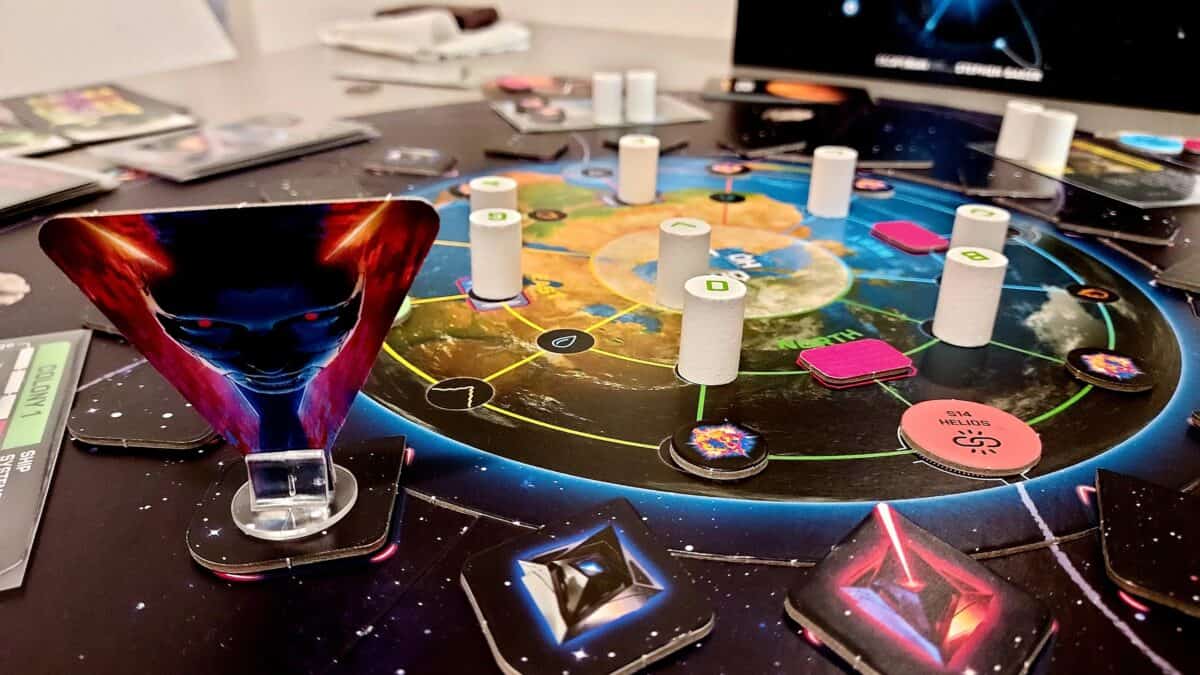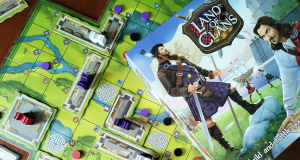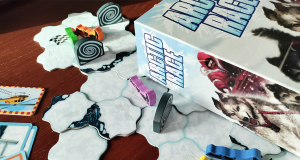The AI designed to protect Earth has deemed that the planet’s biggest threat is humankind – and decided to destroy it. Will the players be able to stop GAIA before it’s too late?
Reviewed by Juho Ljokkoi
First published by Lautapeliopas.fi: www.lautapeliopas.fi/peliarvostelut/project-gaia (in Finnish).
Let’s start by mentioning that Project GAIA, published by Gamestorm and designed by Stephen Baker, should not be confused with Feuerland Spiele’s Gaia Project (2017). These are two completely different games.
Stephen Baker is best known for Hero Quest, a game that has entertained many older players all the way from the late 1980s. Baker’s newest game, Project GAIA, is built on the same principles as Baker’s earlier game, EscapeRUN Alcatraz (2022). In EscapeRUN, 2-6 players try to escape from the famous prison island, while in Project GAIA, the same number of players work together to stop the AI called GAIA from destroying humankind.
General description
In Project GAIA, players control teams consisting of different characters. Team sizes depend on the number of players, but generally there are 12 characters (the only exception is playing with five players, which will then involve 10 characters). The characters are dealt to the players, and each character is given a random profession card. Character and profession cards feature three attributes (smarts, toughness, and skills) that are needed during the game in space run challenges.
The turns change clockwise. During their turn, the player activates one of their characters and performs an action, and then it’s the next player’s turn. You can only activate each character once during a round. At the beginning of each player’s turn, GAIA itself also activates causing all sorts of trouble to the players. The round ends once all players have activated all of their characters.
The goal of the players is to discover GAIA’s reboot code. To succeed in that, they must collect code tokens scattered all over the game board in order to find code words. If the players manage to narrow it down to three possible code words before one of the three ending scenarios takes place, they win. Now, each player can count their points based on the code tokens they collected and cards they played, and the player with the highest score wins – alone.
There are three ending scenarios that can cause the players to lose – Earth is completely destroyed, all characters have been removed, or the doomsday card is drawn from the GAIA deck. No individual scores are counted because GAIA has succeeded in its mission. Now a new life is ready to begin on Earth, without humankind.
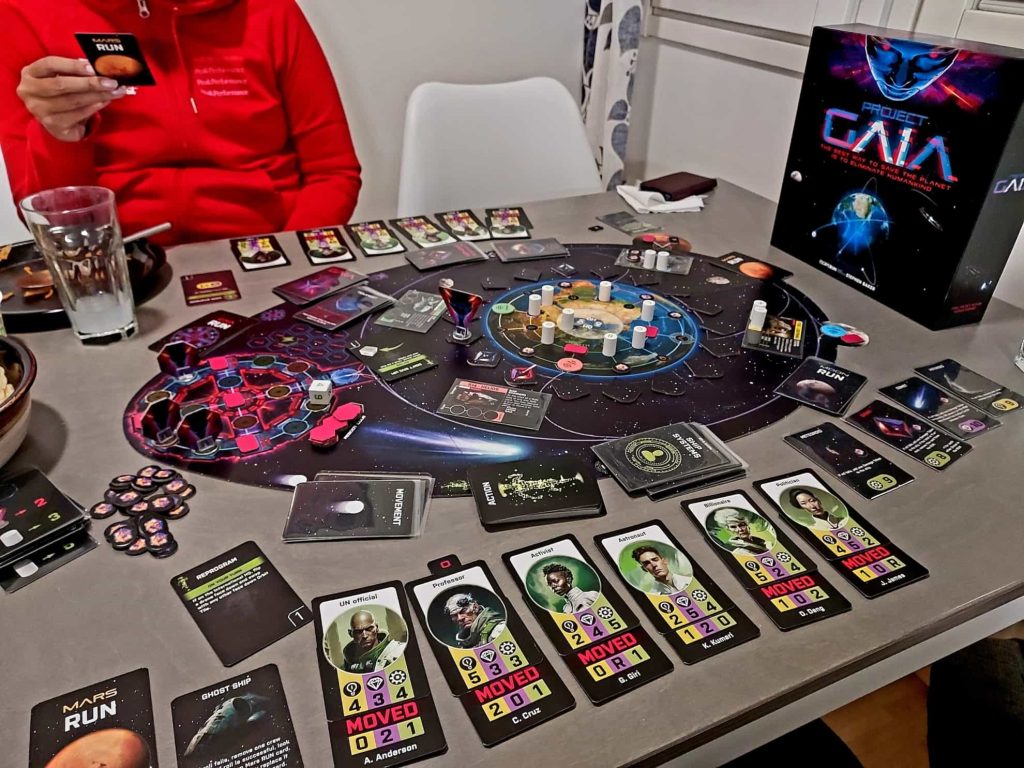
GAIA tries to eradicate humankind…
At the beginning of each turn, the player turns the top card of the movement deck. This card determines GAIA’s action, the GAIA token’s movement, and the character’s movement score.
GAIA has four different actions that depend on the card that was turned. GAIA can:
- flip an orbit tile. At the beginning of the game, Earth’s orbit is filled with orbit tiles that have either an active or a passive climate drone on their hidden side. When a movement card tells you to flip an orbit tile, the player in turn flips their chosen tile to reveal either an active or a passive climate drone. However, this does not actually activate the drones.
- activate its space station’s security system. The card shows the colors of the spaces on the space station where three of GAIA’s security robots must be placed. If there are player characters on such spaces, they are removed from the game.
- turn the next card from the GAIA deck. This deck’s cards wreak all kinds of havoc on the game board, including adding disaster tokens on Earth, activating climate drones, and flipping orbit tiles. One of the bottom three cards of the GAIA deck is the doomsday card that, when revealed, ends the game immediately.
- think. GAIA performs no action.
Once GAIA’s action has been performed, the GAIA token is moved counterclockwise on the orbit according to the number of steps shown on the card. If movement ends on a passive climate drone or an orbit tile that is picture side down, all active climate drones are activated. This means that for each active climate drone, a card is turned from a separate deck. The card will destroy one segment of Earth. If there is a player character on such a segment, it is removed from the game.
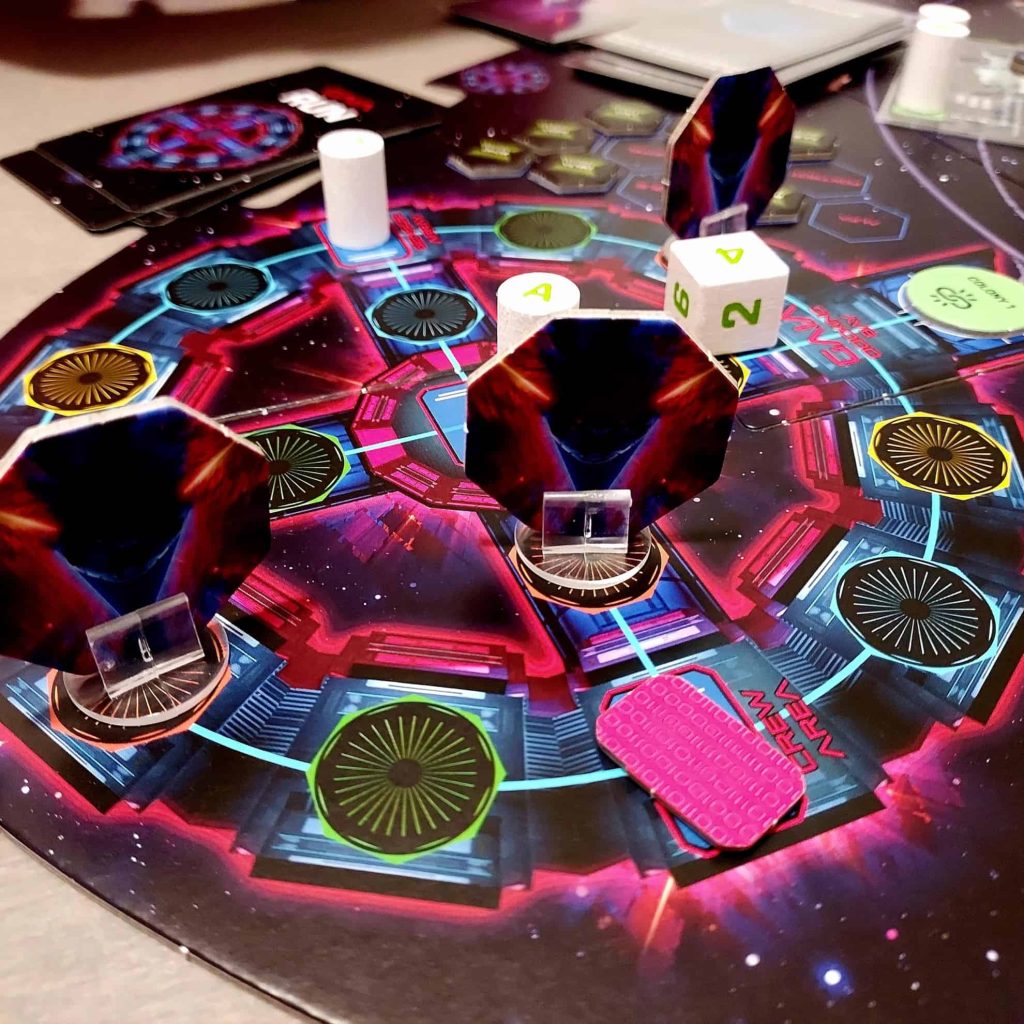
… and humankind tries to stop it
After GAIA’s actions, it’s time for the players to act. During their turn, the player chooses one of their characters and moves it according to the number indicated on their movement card. You can’t stay still unless you really have to (for example, when GAIA has destroyed segments of Earth in a way that the player cannot move), and movement cannot stop on the same space from where the character started moving. Characters already removed from the game must also be activated, but in these cases, the player doesn’t move the character pawn or perform any action.
After moving, the player can:
- collect a code token if movement has ended on a space with a code token. The code token is flipped, and the other side will reveal a number between 0 and 2. The player reveals code words according to the code token’s number.
- hop aboard a spaceship if movement has ended on a ship dock. There are four different spaceships on the game board that players can use to fly to new locations. Each ship has a special ability and a certain number of available spots for characters.
- start a space run if the player’s character is aboard a spaceship that has the required number of crew. A space run can also be initiated during the same turn as when a character has hopped aboard a ship. During space runs, players must survive challenges that are determined by the ship used and the destination (moon, Mars, GAIA’s space station, or a trip back to Earth). In these challenges, players are usually required to reach a certain sum based on a character’s attribute (smarts, toughness, and skills) and a roll of the die. A run is successful if the ship remains intact and at least one crew member is alive after the last challenge card.
At the end of a turn, the player draws either an action card or a ship systems card. These cards boost attributes and give special advantages, and their use is limited depending on location and time.
Once the player has drawn a card, they mark the character they activated during that turn used, and the turn goes to the next player. At the beginning of their turn, GAIA activates first again. Once all players’ characters have been activated, nothing special happens. Instead, the characters are ready to be used again and the game continues normally. However, the first two times when the movement deck has been completely used and shuffled into a new deck, a couple of good cards are removed from it (for example, GAIA performs no action).
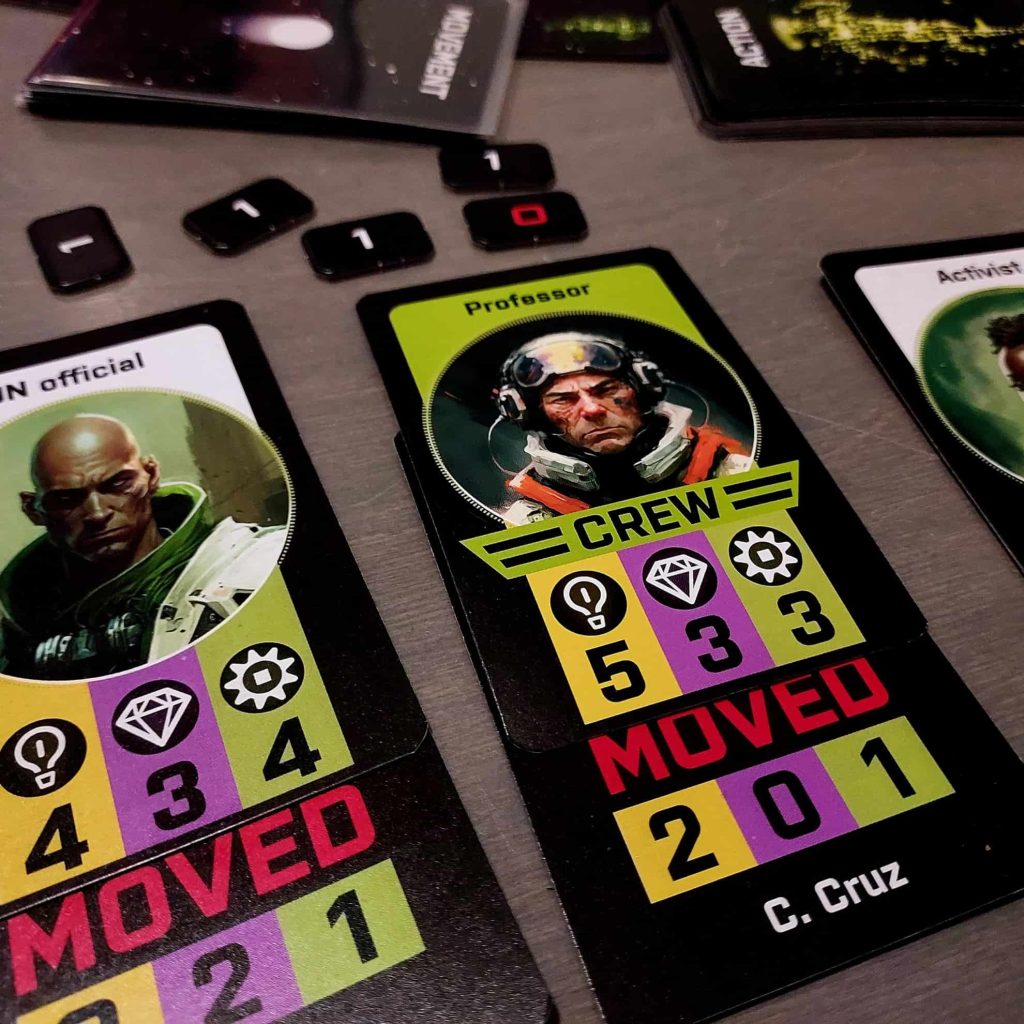
Playing it safe
Project GAIA doesn’t bring anything new or surprising to the genre of cooperative games. It is very much based on traditional cooperative game mechanics. The game’s “opponent” gets tougher as the game progresses, the space on the game board keeps getting smaller, and there’s a constant sense of urgency.
The best thing about Project GAIA are the space runs. They appear to be a very crucial part of the game because players have to travel away from Earth to collect code tokens that are a must to win the game. This also highlights the cooperation between players, as they have to clear challenges together while making use of the characters’ attributes and cards. I would’ve hoped for more variety in the challenges, though, as now they heavily emphasize just how unpredictable die rolls are. However, the right action cards can make things a bit easier when it comes to die rolls.
A slight sense of inactivity can make player turns less exciting. A character’s movement score is based entirely on the turned movement card, and if the score is low, the player might not make it very far on the board. This could also mean that the player may not be able to perform any action during their turn. When this happens, players can naturally discuss what the next smart move could be, thinking ahead to upcoming turns. On the other hand, turns do progress quite quickly, so it’s not a big flaw if someone is not doing anything during a turn.
I don’t quite get why Project GAIA has a competition between the players at the end to determine an individual winner. There’s no thematic reason for that either. It would be a completely different case if one of the players played the “bad guy” role and actively tried to help GAIA destroy humankind. I’ve always left out the part of determining an individual winner from my game sessions. It doesn’t affect the rules in any way, it just means there’s no individual score counted at the end.
Despite the “weaknesses” I mentioned, Project GAIA works well and has no bigger flaws. However, it didn’t exactly make me jump with joy, as I felt I’ve already played extremely similar cooperative games.
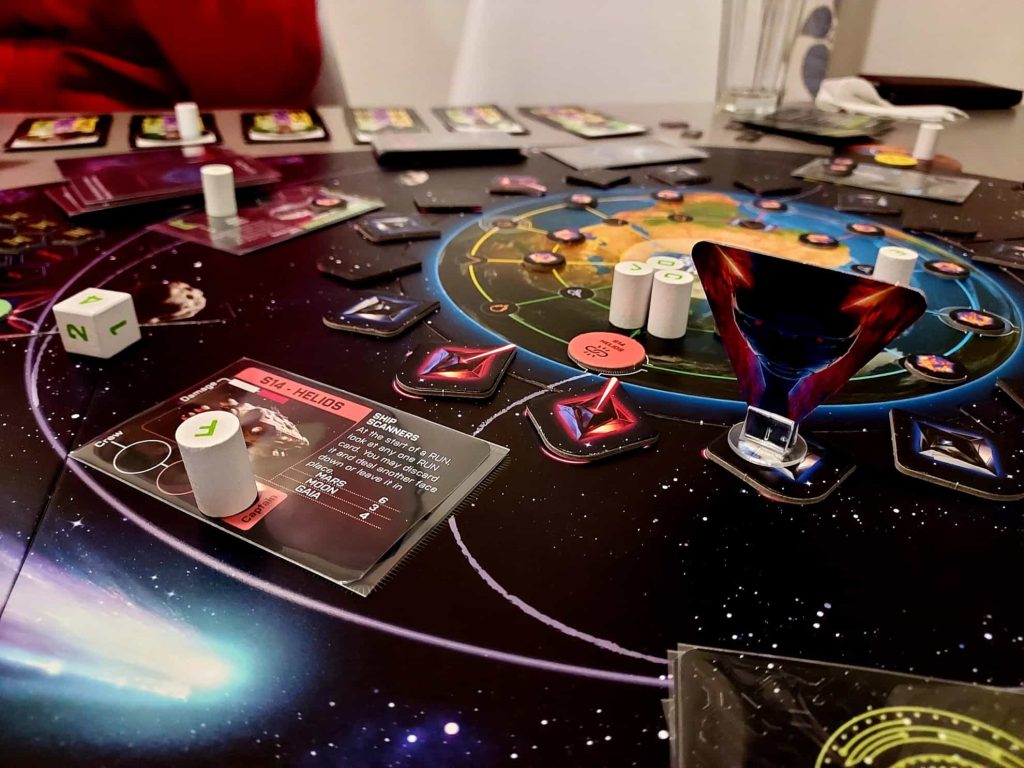
The facts
Designer: Stephen Baker
Publisher: Gamestorm Studio (2023)
Complexity: The game is very straightforward and clear. The difficulty doesn’t really come from the game’s rules, it comes from the “opponent” growing stronger and actions performed during the game.
Luck factor: Some sessions are more challenging than others. It depends on which order which cards are turned, and what GAIA does at what stage. The luck factor is also evident in die rolls. However, with skillful cooperation, players can (to some extent) anticipate potential poor cards and die rolls.
Interaction: It’s a cooperative game, so there’s plenty of it.
Theme: As a theme, the threat of AI and computers is a bit tired already and doesn’t bring anything special to Project GAIA’s gameplay.
Replay value: The variety between game sessions is not huge, even though the players’ luck when drawing cards can make some sessions more challenging than others. The game can be replayed several times without it feeling dull.
Accessibility: As far as I know, the game is only available in English, so at least one player has to know English to be able to understand the rules and the cards. At first glance, the game board might look confusing, but it’ll quickly become clearer during the first game session.
Number of players: 2-6. I recommend a maximum of 4. Anything more than that, and the game becomes too chaotic and confusing.
Duration: 60-120 minutes according to the box. My average has been around 90 minutes. The game rarely lasts for 2 hours due to the quick turns.
Learn more about Project Gaia

